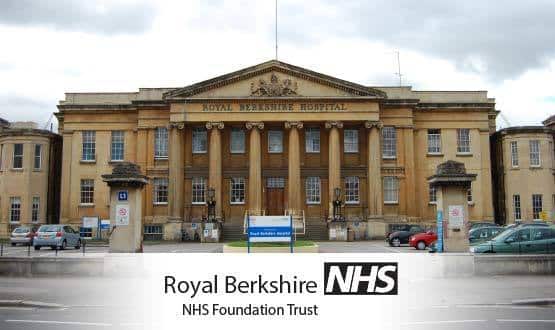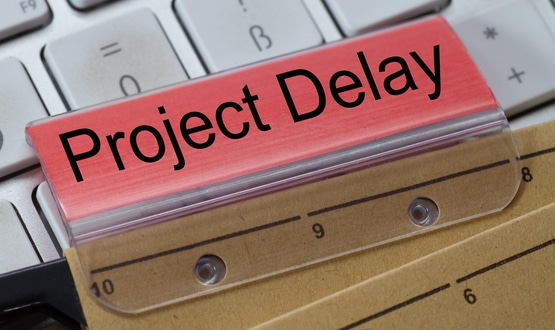Berks on track: Reading hospital reboots its use of Millennium
- 9 December 2015

In the emergency department of the Royal Berkshire Hospital in Reading, a digital screen displays a feed directly from the Southern Ambulance Service.
All patients arriving via blue lights are listed; along with when they are due to arrive and the category of ambulance response. ED consultant David Mossop explains that this helps staff to prepare; and to meet the 15 minute target in which handover from ambulance to hospital staff is supposed to take place.
A different screen takes a feed directly from Southern Ambulance Service’s electronic patient record and shows patient observations taken by the paramedics.
This link is also used by some geriatric consultants, who can see the ambulance information and give advice on where to take the patient. The real benefits will come when this information links directly into the hospital’s Cerner EPR, Mossop says.
A&E leads the way
Royal Berkshire’s go-live with Cerner Millennium in mid-2012 was beset with problems, but the ED is an area where the system – in the form of FirstNet – has had time to bed in and to show real benefits.
Having an electronic system helps the department predict how many patients to expect on any day and means the team can plan resources better and pre-empt when pressure points will occur.
“We have certainly got more of a handle on where the problems are and why they occur. We are struggling to hit our [A&E four hour waiting time] target as everyone is, but it’s easier with all the systems in place to manage it,” says Mossop.
Full patient notes are still written on paper and a photocopy of these goes with the patient to the ward; but the trust recently started a pilot in the minor injuries unit in which notes are entered electronically.
Meanwhile, within the department, clinical staff can see a summary of a patient’s GP record via a button embedded in the EPR. This link is provided by the Medical Interoperability Gateway.
All 54 of the GP practices in West Berkshire provide patient details for the trust users as well as the West Berkshire out-of-hours service. Live since August, the trust has almost 100 users spread across ED, cardiology, cancer care and pharmacy.
A bit of background
Royal Berkshire decided to quit the National Programme for IT in the NHS in 2009 and signed with the University of Pittsburgh Medical Centre, which had previously done a deal to implement Cerner Millennium across Newcastle.
It finally went live in mid-2012 with the Millennium patient administration system, ED and a bespoke tool the trust had developed called Bedview.
However, it was immediately hit by significant operational and financial problems and halted plans for any further deployments. Digital Health reported extensively on the issues faced by the trust over the next year.
Heather Allan has been the director of IM&T for the past one and a half years, so was not around when the EPR first went live. But she joined as discussions were ongoing as to whether to stick with the Millennium system or go out to tender for something else.
In the end, the trust decided to stick; awarding a £15 million, eight-year hosting contract to Cerner, after managing its own support over several years.
“I had a good discussion with Cerner. They were very keen on this trust becoming one of their really good sites and actually committed to help us go on that journey.
“Since then, they have been extremely supportive, and we are in a better place than the people in the national programme [that received the system via a local service provider] because we are fairly self-sufficient and we have our own relationship directly with Cerner,” she says.
“One of the things we have certainly learned now is not to try and make Cerner very specific to this trust, but try to use out of the box solutions. Cerner’s product has developed over the years and so has Cerner; so in our current relationship we in a good time.
The trust also holds an IT outsourcing contract with CSC, worth up to £50 million, which it has managed to renegotiate.
“As well as working very closely with Cerner, I’ve also worked with CSC,” says Allan. “Two years ago, the trust needed to move faster with infrastructure development and was constrained somewhat by the contract.
“A revised agreement made in the middle of this year gives us a forward five-year view, with an infrastructure plan emerging as part of that with a much more acceptable level of expenditure overall.
“These contracts are partly what you put into them,” she adds. “We put a lot of work into working with Cerner and CSC over the last year and it’s really bearing fruit: our partners understand us a lot more and what’s important to us and we know where they are coming from.”
The new strategy
Royal Berkshire’s initial go-live with Cerner was limited and nothing major has been deployed since 2012. This means that despite putting a lot of work into scoping an EPR, clinicians have missed out on getting the clinically focused systems they hoped for.
Allan says the next steps on the journey are all clinically focused, with plans to implement e-prescribing, clinical documentation and medical equipment links into the EPR. Preparatory work for these deployments that was done previously will be built on, rather than wasted.
The idea is to make the EPR the place to go and “see stuff”; so helpful things like discharge letters will be made available there, rather than in a separate portal.
Allan believes the trust could be paperless within the next four years and sees the introduction of order communications, which started rolling out over the summer, as a “turning point” for clinicians in that journey.
Cardiology consultant and chief clinical information officer Jon Swinburn agrees: “In 2012, (Cerner) was mainly an administration system.
“A huge amount of work went into getting the EPR; but apart from Bedview it was predominantly an administration system and there was a fair bit of frustration that we never managed to get the clinical systems in place.
“This is the first bit that makes a big difference to the clinicians so they’re now beginning to see what the benefits of an EPR are,” he adds.
The end of paper notes in sight?
With clinical documents being rolled out in 2016, Swinburn hopes that by 2018, paper notes will not be needed on a routine basis.
He explains that while there was a lack of consolidated strategy, staff went off and “did their own thing” to make their own areas more efficient. The aim is to try and fuse that enthusiasm together and work in a more aligned way.
More than 200 applications are now in use at the trust, including many in-house developments. The team is keen to phase many of these out over time and move them into the EPR where appropriate.
Assistant director of programmes Amanda Grossman expands on this idea: “We’ve made a philosophical and architectural decision which says Cerner is the centre of the universe.
“That’s where the ultimate version of the truth is, and where that functionality doesn’t – or won’t – exist in Cerner we will integrate specialist systems into it.
“A good example is ophthalmology. We’ve upgraded that system and those that link to it to ensure they are on a secure platform and backed up. Now, we are in the process of integrating it with the EPR thoroughly, so there’s a scheduling and activity interface.”
Bedview
One thing clinicians did get at go-live and use regularly is Bedview. This bespoke system uses the underlying patient administration system and provides some clinical data on top. The result is a live bed management system, which nurses use when admitting patients into beds.
Bedview was preloaded with information dating back to 2010 when it went live in 2012 and now is updated with data entered directly by clinicians.
Staff can see details of previous encounters and discharge summaries and, since order communications went live, it has been fed with some test results. Venous thromboembolism assessments have also done on the system since 2012.
In the Cardiac Care Unit, charge nurse Mark Brunton explains that the introduction of the bed management tool was done in a big bang approach and it took some time and training for people to get used to it. Functionality is now being added in a more ‘drip-feed approach’.
He says the speed at which staff can now see information from previous hospital stays and view results at the patient’s bedside makes a big difference.
“It’s having more information at your fingertips which makes your understanding of the current patient’s needs much improved,” he says.




